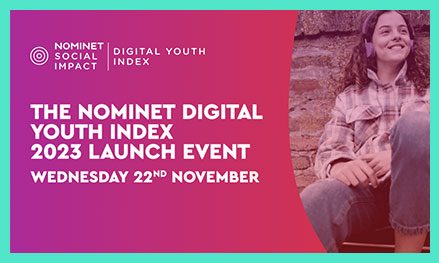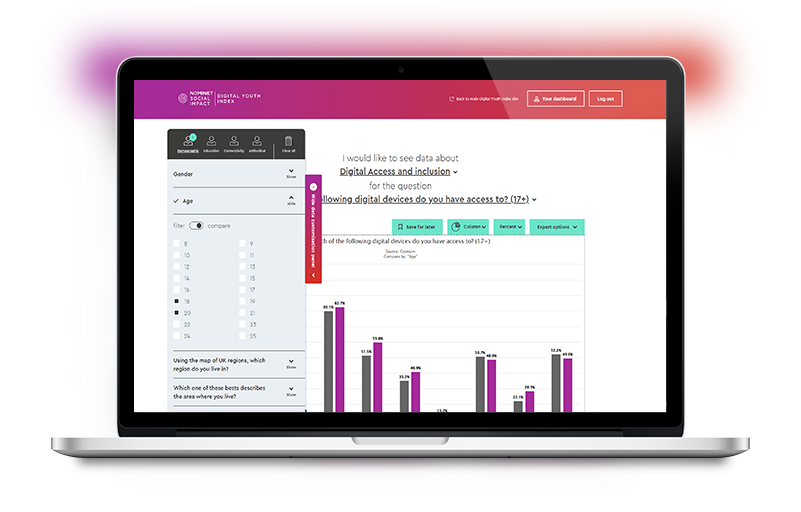Living in the UK now, many of our essential and day-to-day services are online. And as the pandemic eases, services that switched to digital-first are staying that way.
The good news; online services are great. They’re often easier to access because they don’t ask people to travel, which is cheaper, more convenient and can ease social anxiety. The reduced friction to access means a young Mum can take part in a virtual training programme from home, keeping half an eye on her baby [1]. Online services are cheaper and often more efficient to run, meaning public and charitable funds go further.
But, when we offer essential services virtually, there’s a risk we assume people have privacy. Many people living in the UK access essential services from crowded flats or shared accommodation. Plenty share a device with a family member. This is especially true for people hit hardest by the cost-of-living crisis, who face financial hardship. And this means when they access services, they’re not able to do it privately.
If someone walked into a rape crisis centre, we would never ask them to discuss their situation in the waiting room. But when we assume people have spatial privacy for online services, that’s effectively exactly what we’re doing.
Lots of people use public WiFi as a key point of access. The digital youth index suggests 6% of young people use it as their primary access point. Apart from concerns around safety (submitting personal information on unsecure networks), this also means they likely don’t have spatial privacy when they might need it. Who wants to speak to their mental health practitioner from a chicken shop?
Sometimes siblings share devices, often because that’s all the family can afford. If a young person wants to instant message a mental health service, but they know their brother might read it, how likely are they to use it? And if they do use it, can they be honest? This is especially important when it comes to LGBTQ+ issues, sexual health, drug use, abuse or mental health.
Often, if we can’t speak honestly and privately, we can’t get help. From medical to social care, essential services need to think carefully about how the switch to digital translates to how people can actually access a service.
I interviewed a man recently who told me about when he was homeless, he would submit accommodation application forms in the local library. He described watching the hour limit on the desktop tick down, someone standing behind tapping their foot, feeling like he was being watched over his shoulder. According to OFCOM, 6% of UK adults do not have Internet at home. [2] If this service isn’t being offered in person, we need to offer a dignified option.
So, what can we do?
- Build offline options into essential services. The Welsh government has made sure all essential services have offline options. Should the UK be following suit?
- Understand digital poverty and build it into service design. Platforms and services need to build digital poverty into design. How can this platform allow for safety within device sharing? Can we build spatial privacy checks into our assessment process? Is two factor authentication only available to people wealthy enough to have two devices? Is this data hungry video streaming necessary, or does it exclude people who can’t afford high data allowances, or who live in rural areas with poor Internet speeds?
- Partner up with digital inclusion programmes and organisations. For any online public or charitable service, organisations need to offer devices, data and skills so people can access support online. Partnerships could be local, or national (see the National Device Bank and National Databank).
- Build awareness of digital poverty in frontline workers. Frontline workers need support to feel confident in helping people access online services. If we can skill up frontline workers, we could tackle digital poverty across the UK, and get support to people who need it most. Digital poverty is the new equality and diversity agenda; it’s everyone’s problem and needs to be a part of all frontline workers’ jobs.
Spatial privacy in accessing essential services online is as important as digital privacy (keeping personal information safe). As the world shifts online, we have to bring everyone with us, not just the ideal user. It’s a challenge we have to tackle together.
Read the 2022 Nominet Digital Youth Index
[1] This happens in our Catch22 services and we get great feedback from it.
[2] 2022 Online Nation, Ofcom

Kat Dixon, Director of Partnerships, Catch22 and Digital Youth Advisory Panel expert
Kat builds digital skills and online safety services. She is a Fellow with the Data Poverty Lab and a Digital Poverty Alliance Ambassador.
Share this article








